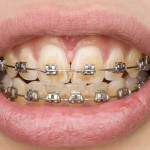
Orthodontically induced external apical root resorption (EARR) is common being reported to occur in 80% of patients undergoing orthodontic treatment with sever resorption occurring in about 14.8% (Bayir F, Bolat Gumus E ,2021). Factors linked to EARR include patient age, duration of treatment, the magnitude of orthodontic force, and type of orthodontic devices. In addition, previous endodontic treatment and pulp status may increase EARR.
The aim of this review to determine if there is a difference in orthodontically induced external apical root resorption between root-filled teeth (RFT) and vital pulp teeth (VPT).
Methods
A review protocol was registered in the PROSPERO database. Searches were conducted in the PubMed, Scopus, MEDLINE (Ovid), Web of Science, and Cochrane Library databases. Clinical studies with data on root resorption before and after orthodontic treatment were considered. Two reviewers screened and selected studies extracted data and assessed risk of bias. The Cochrane Risk of Bias in Non-randomized Studies of Interventions (ROBINS-I) tool was used to assess risk of bias. A random effects meta-analyses was undertaken.
Results
- 11 studies were included.
- 4 studies reported EARR of vital teeth to be significantly higher than root-filled teeth and 4 reported EARR to be similar for VPT and RFT.
- For all studies root filling preceded orthodontic treatment by an unknown time period.
- 8 studied contributed to the meta-analysis: –
- EARR for root-filled teeth was significantly lower that vital teeth SMD = -0.45 (95%CI; – 0.74. to -0.16).
- For anterior teeth there was no difference in EARR between VPT and RFT SMD= = -0.42 (95%CI; – 0.84. to 0.01).
- In posterior teeth EARR for RFT was significantly lower that VPT SMD= -0.61 (95%CI; -1.17 to -0.05).
Conclusions
The authors concluded: –
In the context of concurrent endodontic and orthodontic treatment, priority should be given to endodontic therapy, as it serves as the foundation for subsequent orthodontic procedures. The optimal timing for orthodontic tooth movement post-root canal therapy is contingent upon factors such as the extent of periapical lesion resolution and the degree of dental trauma sustained. A comprehensive clinical assessment is essential in guiding the selection of the most suitable approach for achieving optimal treatment outcomes.
Comments
The authors of this review registered their protocol with the PROSPERO database and searched a number of major databases. Eleven studies met the inclusion criteria, all but two being retrospective. This compares with just 4 studies that were included in a previous review by Walker et al ( Dental Elf- 11th Apr 2014). While more studies could be included in this new review the sample sizes were small ranging from 16 to 60 patients with variation in treatments times and type of radiographic evaluation (periapical, digital panoramic, panoramic, CBCT). This variation across the limited number of studies of small size means that while the available data suggests less EARR in root -filled teeth the certainty of the evidence is very low and the findings should be interpreted cautiously.
Links
Primary Paper
Zhao D, Xue K, Meng J, Hu M, Bi F, Tan X. Orthodontically induced external apical root resorption considerations of root-filled teeth vs vital pulp teeth: a systematic review and meta-analysis. BMC Oral Health. 2023 Apr 25;23(1):241. doi: 10.1186/s12903-023-02982-4. PMID: 37098519; PMCID: PMC10131310.
Other references
Bayir F, Bolat Gumus E. External apical root resorption after orthodontic treatment: Incidence, severity and risk factors. J Dent Res Dent Clin Dent Prospects. 2021 Spring;15(2):100-105. doi: 10.34172/joddd.2021.017. Epub 2021 May 5. PMID: 34386180; PMCID: PMC8346714.
Dental Elf- 11th Apr 2014
Dental Elf- 4th Sep 2019
Root resorption in patients having clear aligner orthodontic treatment
